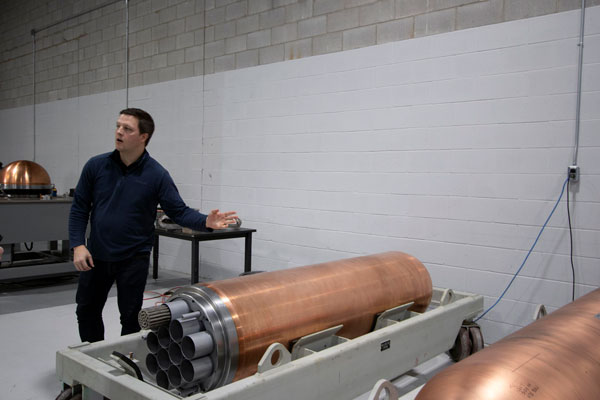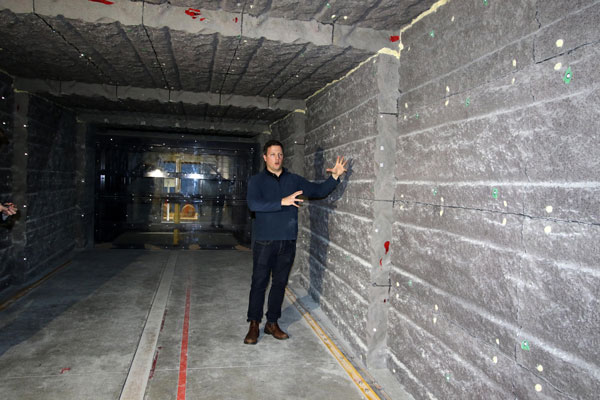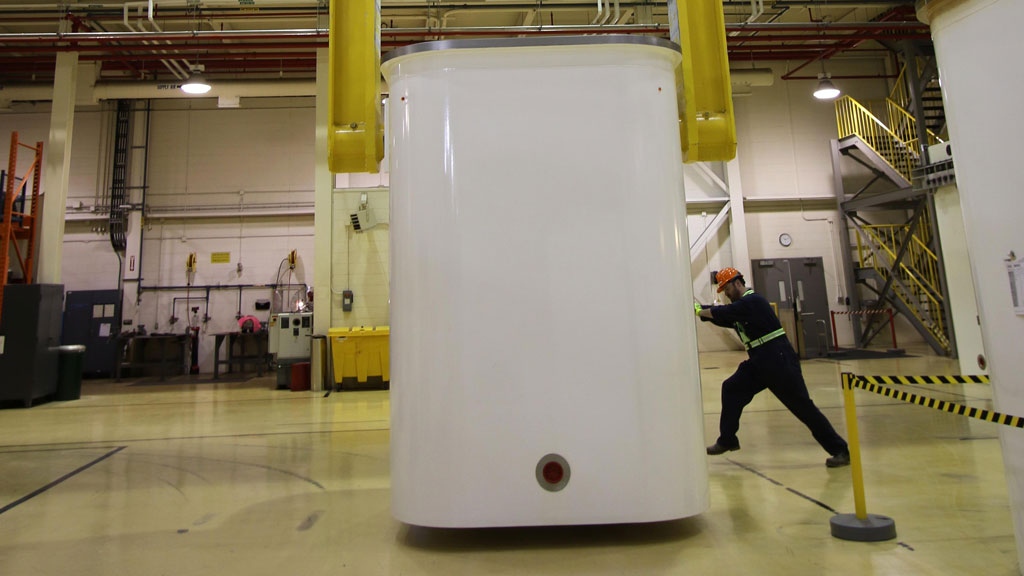Picture this: A deep geological repository more than 500 metres underground, which is about as deep as the CN Tower is tall.
That may be what the future holds in order to safely address the long-term management of used nuclear fuel in Ontario.
“Its design will rely upon a series of engineered and natural barriers that work together to safely contain and isolate used nuclear fuel,” explained Russell Baker, manager of public and media relations with the Nuclear Waste Management Organization (NWMO), during a tour at the Discovery and Demonstration Centre in Oakville, Ont.
“This design ensures that used nuclear fuel will remain contained and isolated for the very long term.”
The NWMO is a not-for-profit organization tasked with finding a solution for the safe, long-term management of Canada’s used nuclear fuel.
“We’ve made a lot of progress in 20 years and are on the cusp of the next phase of our work,” explained Baker.
“In 2024, we will select a site to host the repository, which will only proceed with interested communities, First Nation and Métis communities, and surrounding municipalities working together to implement it.”
The NWMO was mandated through federal legislation in 2002. After a three-year dialogue with specialists, Indigenous people and members of the public, a proposed plan emerged.
The Adaptive Phased Management plan was selected in 2007.

There’s currently about 3.1 million bundles of used nuclear fuel in Canada, Baker explained.
The country’s used nuclear fuel is a ceramic pellet, not a liquid or gas. It’s put into bundles that go into nuclear reactors.
“When removed from a nuclear reactor, the bundle looks the same as when it went in, but it’s highly radioactive and will remain that way for a long time,” said Baker. “Once a used nuclear fuel bundle is removed from a reactor, it’s placed in a water-filled pool where its heat and radioactivity decrease over time. After 10 years, the bundle is placed in a dry storage container.”
Used nuclear fuel is currently stored on an interim basis in licensed facilities at nuclear power generation sites in Ontario, Quebec and New Brunswick. While the approach is safe, it’s temporary and long-term solutions are needed.
“It is widely recognized as inappropriate over the long-term,” said Baker. “It will take hundreds of thousands of years for radioactivity in used nuclear fuel to subside. We need a long‐term approach.”
Baker explained the proposed repository includes underground tunnels and placement rooms.
Similar activities are happening in Sweden, Finland, France and Switzerland.
“There is international scientific consensus that this is the best solution for used nuclear fuel,” Baker said. “Canada is one of many countries planning to build a deep geological repository to protect people and the environment.”
Activities at the Discovery Centre include optimizing repository designs, demonstrating safety of the engineered barrier system and developing a safe and secure transportation system. A number of tests are currently taking place there.
Before closing the reposi-tory, tunnels and shafts will be filled with backfill and sealants, isolating the repository from the environment. The repository will be constructed in the geosphere.
“The hundreds of metres of rock that will surround the repository will work with the engineered barrier system and will help protect the repository from inadvertent future human intrusion and disruptive events like future ice ages and glaciations,” said Baker.

The NWMO will only proceed with the project in an area with informed and willing hosts, Baker stressed. Initially 22 communities expressed interest in learning more about the site selection process.
“We’ve now been working with these communities for over a decade and through increasingly intensive technical studies and social engagement, we have narrowed our focus down to the two siting areas,” Baker said. “We anticipate identifying a single preferred site in 2024.”
The two Ontario sites are the Wabigoon Lake Ojibway Nation‐Ignace area and Saugeen Ojibway Nation‐South Bruce area.
“Following a multi‐step process that includes field investigations, a comprehensive regulatory decision‐making process and ongoing community and public engagement, the deep geological repository will be constructed over an estimated 10‐year period,” Baker said.
Once the repository is constructed, all of Canada’s used nuclear fuel will be moved to the site for management.
Transportation is an imp- ortant part of the plan. In 2020, the NWMO released a draft transportation framework and in 2021 it published a plain‐language Preliminary Transportation Plan.
“Over the next two decades, both the transportation planning framework and transportation plan will continue to evolve through regular review, ongoing public input and site‐specific refinement, as the project advances through the site selection process to regulatory approvals, construction and operation,” said Baker.
Once the repository is selected, a regulatory decision‐making and licensing process will begin. A Centre of Expertise will also be built at or near the repository site.
“Following that, we anticipate breaking ground on the repository in the 2030s and beginning operations in the 2040s,” he noted.
“Used fuel transportation, handling and placement in the repository is expected to take up to 50 years to complete, depending on the inventory of used fuel to be managed. After that, the repository will be monitored for an extended period of time before decommissioning, closure and post‐closure monitoring.”
Follow the author on Twitter @DCN_Angela




Recent Comments